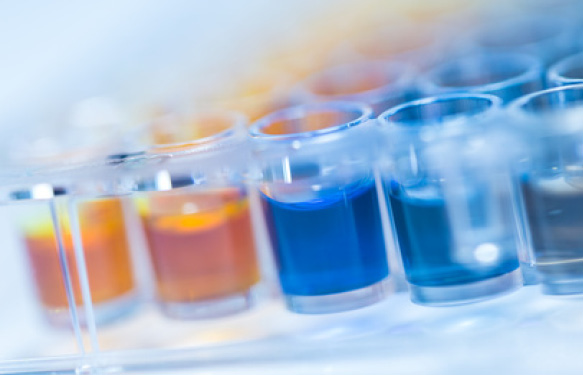During my daily discussions with researchers involved in in vitro iPS and Embryonic Stem cell cultures, I am always amazed by the passion that drives them. However, the more I go in depth with them in their protocols to optimize them, the more I realize that “time and money” are very tricky points when cultivating these cells. This can be summarized by a simple question: How can I optimise my media to cultivate Stem cells with stable and cost-effective Stem Cell Factors?
In other words, what are the most economical recent advances in Stem Cell research allowing high quality culture without spending my week-ends feeding my Stem cells ?
Encapsulated Stem cell growth factors
Recently, a new technology based on “Stabilized” Stem cell Factors has been developed. These growth factors are encapsulated in biocompatible microspheres (Polyesters of Glycolic and Lactic Acids or PLGA beads). These “beads” allow sustained release of the Stem cell Factors into your media of choice, thus creating a more stable environment for your cells.
Optimal FGF-2 dependent stem cell culture – FGF2 StemBeads
StemBeads FGF2 steadily release growth factor into the media, thus enabling you to reduce the feeding frequency of your stem cell cultures to bi-weekly.
FGF-2 StemBeads users report the following advantages:
- Significant savings on media costs – media changes are reduced by 67%
- Better culture quality – reduced spontaneous differentiation
- No protocol change – 100% compatibility with established media & culture conditions
- Used with leading commercial media, it can save us up to 35% per week in media cost
- Used with standard DMEM/KSR media, it can save up to 15%


A cost effective way to grow Activin-A dependent cell cultures – Activin A StemBeads
Activin-A is used sometimes to maintain pluripotent stem cells or to differentiate them to different lineages (ex. endoderm). While soluble Activin-A is degraded in culture after 12 hours of culture, StemBeads Activin-A releases a constant rate of Activin-A into your culture media. Data have shown that this Activin A release lasts for over 5 days, thus creating a more stable environment for Stem cell cultures.
Activin A users noted the following points:
- Fewer media changes (as little as one media change in 5 days)
- Significant savings compared to soluble Activin-A
- Significant savings on media and less labor time
- Easy-to-use : simply add Activin A StemBeads to usual media


EGF dependent cell cultures – EGF StemBeads
These EGF StemBeads offer you the same reliability and flexibility as FGF2 and Activin A StemBeads. EGF is a growth factor that stimulates proliferation of various cell types and Stem cells. EGF StemBeads stabilize EGF leading to optimal cellular performance.
As these have only recently been released, I have not yet been able to collect user’s comments, but I have found some convincing data to show you that EGF StemBeads are genuinely efficient!


Convinced that StemBead technology will save you time & money in your Stem Cell research?
To get started with StemBeads, contact our experts in cell culture, Stem cell and cell reprogramming approaches at europe@tebu-bio.com !



